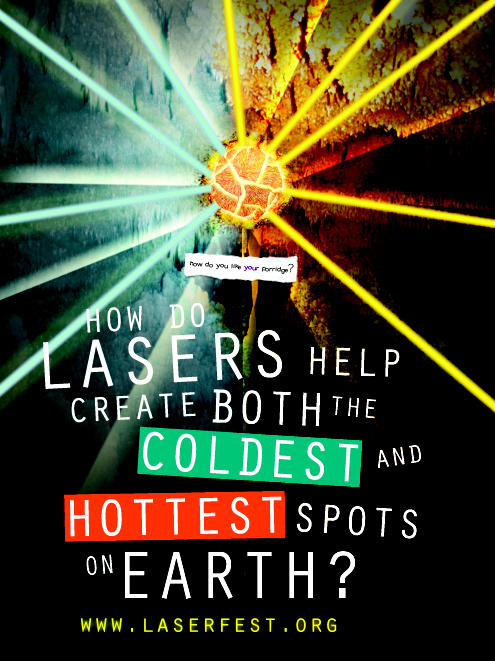| Tikalon Blog is now in archive mode.
An easily printed and saved version of this article, and a link
to a directory of all articles, can be found below: |
|
This article |
| Directory of all articles |
Fifty Years of Lasers
June 8, 2010
This year marked the fiftieth anniversary of the demonstration of the first
laser [1-2].
Theodore Maiman of
Hughes Research Labs achieved laser action in a
chromium-doped piece of
aluminum oxide crystal (a.k.a.,
ruby) on May 16, 1960.
As part of this year's laser celebration, the Nature Publishing Group included a supplement, entitled "Photons," with the current issues of
Nature Materials,
Nature Physics and
Nature Photonics [3]. There's a website devoted to a celebration of the laser at
laserfest.org. Laserfest is sponsored by the
American Physical Society, the
Optical Society of America,
SPIE and the
IEEE Photonics Society. One useful widget on the Laserfest web site is an
interactive timeline of laser history. There are also printable posters, one of which appears in the figure.

History is written by the winners, so when you read about lasers this year, you may not even see a mention of
Gordon Gould. Gould spent most of his life in litigation to obtain patents for the laser. Perhaps surprisingly, he did obtain some patents, and then he spent the rest of his life trying to gain royalties from these patents from laser manufacturers and users of laser technology.
Gould was a graduate student at Columbia University in the 1950s when he got his idea for an optical analog of the maser. The maser, to describe it simply in today's terms, is a microwave laser. His primary innovation was forming an optical resonator between two parallel mirrors. The gain medium would be placed within this resonator, and it could be pumped easily from the open sides. Gould even coined the term, "laser," but it can be claimed that this is just an obvious modification of the word, "maser."
Arthur Schawlow and
Charles Townes independently discovered this optical resonator principle about three months after Gould. They called their device an "optical maser," but Gould's name for the device was much better, and that's what we call it today.
Gould left Columbia without a degree to make a working laser. He wrongly thought that a working device was needed to secure a patent. The reality was that his notebook sketches alone would likely have gotten him the laser patent. In another stroke of misfortune, his laser project at a private research company was classified by the government, and Gould couldn't get a security clearance because of past political activities. In the end, Ted Maiman built the first operational laser, and Gould began a long legal battle for recognition. This legal battle is too involved to be summarized here. See
Gould's Wikipedia Page for details [4].
Gould was an undergraduate at
Union College,
Schenectady, New York. During the summer of 1967, I lived in an apartment adjacent to the Union College campus while working for the
General Electric television station there.
Kurt Vonnegut lived in Schenectady from 1947-1950, working in the GE public relations department while writing short stories.
References:
- Nicholas Kolakowsk, "Laser Celebrates Its 50th Anniversary," eweek.com (May 16, 2010).
- Richard Ingham, "Making light work: The 50-year odyssey of the laser," Physorg.com (May 12, 2010).
- Editorial: A brief history of photons, Nature Physics, vol. 6 (2010), p. 317 .
- Gordon Gould on Wikipedia.
Permanent Link to this article